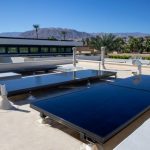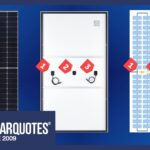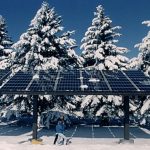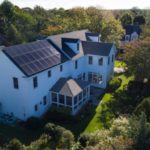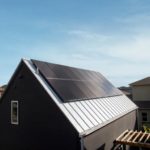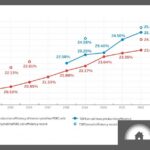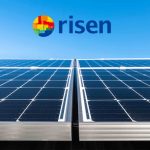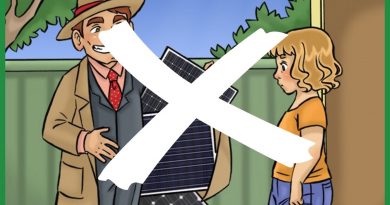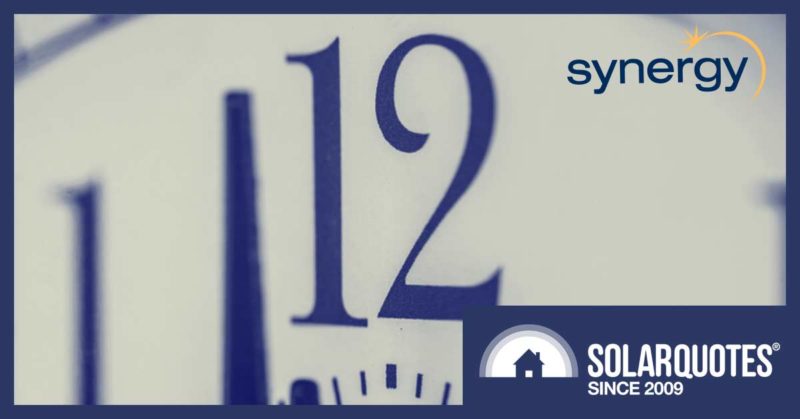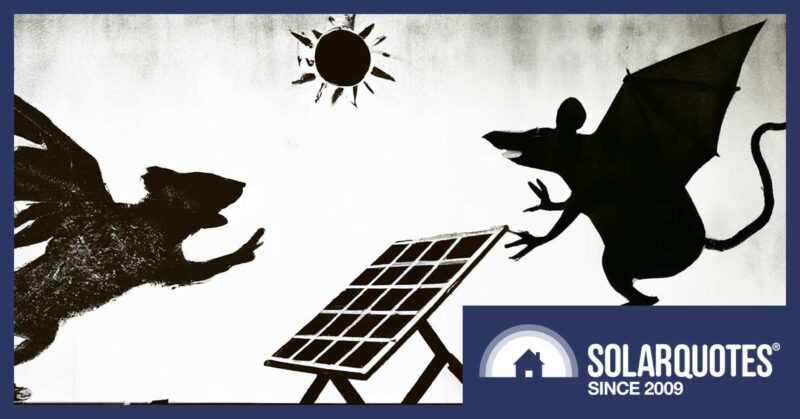Most Solar Panel Warranties Voided By Shading
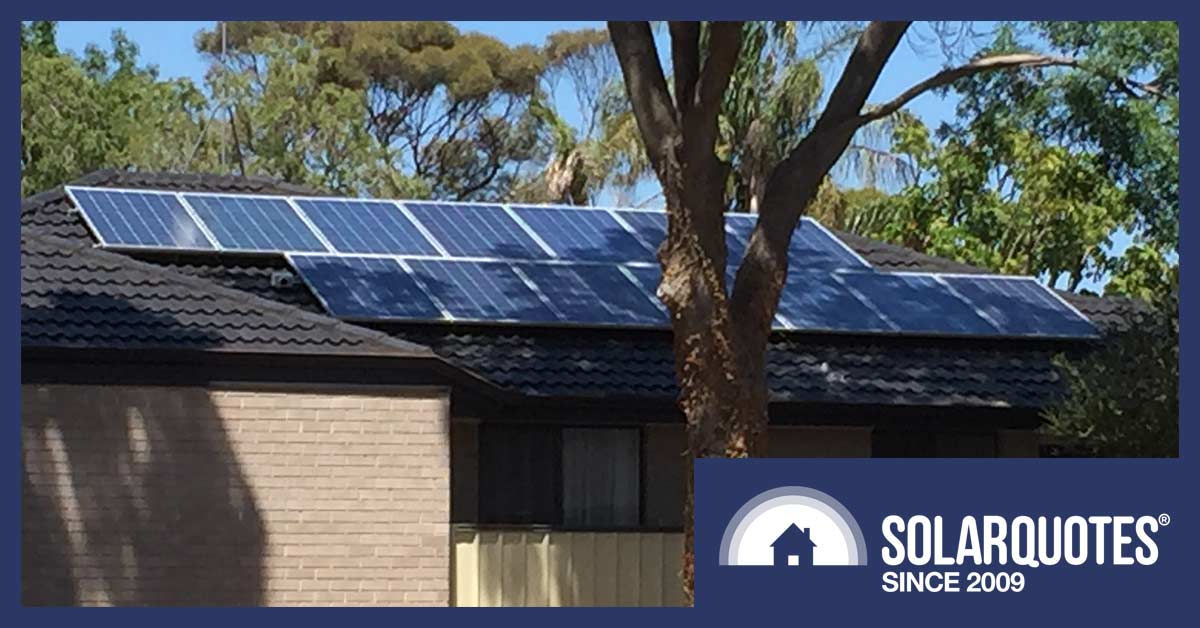

Shade is bad for solar panels. They work by changing light energy into electrical energy, so any shade reduces output. This makes it a bad idea to locate panels anywhere they’ll be out of direct sunlight for a significant part of the day.
But there’s another reason to avoid shade on solar panels: it can damage them. Because of this, most solar panel warranties don’t allow installation under shade. If you want to place panels where they’ll be significantly shaded and still be confident your installer will be able to make a warranty claim if there’s a failure, you’ll have to use one of the small number with warranties that don’t prohibit shade1.
To find out which panel warranties tolerate shading and which don’t allow any, I went through the warranties and installation manuals for all 19 solar panel manufacturers SolarQuotes recommends. I’ll provide details on them all below, but if your hunger for answers is overwhelming, you can skip ahead to the end of the article, where the results are summarised.
Shade & Solar Panel Hotspots
Shading solar panels can reduce their lifespan. Evenly cast shade from clouds does not harm panels, but partial shading can cause energy from solar cells exposed to light to be lost as heat in the shaded cells. This can result in a hot spot that, if hot enough, can damage a panel.
This usually isn’t a serious issue because panels have bypass diodes that normally stop any one spot from becoming too hot. But these diodes can fail over time and with use. To prevent panels from being damaged and deteriorating or even dying from dead diodes, most solar panel warranties require them not to be shaded at all.
Microinverters & Optimizers Won’t Help
Microinverters and optimizers can prevent shade falling on one panel from affecting others, but partial shade can still cause hotspots within individual panels. So using them doesn’t get around “no shade” conditions in any warranty I have seen.
Shading & Consumer Law
A rooftop solar panel can’t avoid all shading. It’s often inevitable very early morning and very late in the afternoon. Partial shading can also occur from bird poop and other dirt on panels. If a solar panel cannot handle this, it’s not fit for purpose and shouldn’t be sold for residential solar. Rooftop solar panels produce little energy when the sun is very low in the sky, so if shading at these times is a serious problem, it’s a crap panel.
Partial shading from dirt on panels, such as bird poop, is also an unavoidable fact of life. Solar panels sold in Australia have to be able to take some shit. If they can’t, it’s a shit panel.
While many warranties say no shade is allowed, we are protected by Australian Consumer Guarantees and these apply regardless of what warranties or their fine print say, or whether or not the warranty period is over. They require products to be of acceptable quality. This means they must be…
- Safe, lasting, with no faults.
- Do all the things someone would normally expect them to do.
This means solar panels sold for rooftop installation have to be able to handle a minimal level of shading that’s unavoidable in normal use, whether it’s shadowing from when the sun is close to the horizon or from dirt on panels, such as the occasional bird poop. But note that Consumer Guarantees do not mean installing panels in shaded areas is okay. There is a big difference between minor shading that’s unavoidable in practice and locating panels where trees or buildings will cast shadows on them for hours a day.
Warranties & Installation Manuals
Many solar panel warranties don’t mention shade, but they do say the warranty won’t apply if the installation manual isn’t followed. It’s in these manuals where you’ll find prohibitions against installing under shade. Just checking the warranty is not enough to see if installing in shade is allowed.
I Didn’t Check Bifacial Panels
With a couple of exceptions, I did not look at the bifacial panels’ warranties, which can use light from above and below. Because they don’t provide any benefit for a typical rooftop installation where they’re installed centimetres above the roof surface, I didn’t bother. (But note bifacial panels can be of benefit on roofs if tilt racks are used.)
I Am Not A Lawyer
Many installation manuals often say shade “should” be avoided. This raises the question of exactly what “should” means. In casual conversation “should” is often used to recommend an action but doesn’t require it. For example, my doctor says I “should” lose weight and my seismologist says I “should” avoid weak points in the earth’s crust, but I don’t have to do those things if I don’t want to.
It’s much the same as when I tell my son he “should” clean his room. He takes that as casual advice he can pay attention to or not as the whim takes him. However, in other situations, “should” can become an imperative. For example, when a judge tells me I “should” give my son his insulin even if he hasn’t cleaned his room.
If a panel’s warranty or installation documents say shade “should” be avoided, I assume it means shade is prohibited. If you think “should” is just a recommendation and want to argue that a warranty stating panels “should” not be installed under shade is not voided by doing so, you can give it a go if you like. I’m not a lawyer, so I don’t know how likely this is to be successful. All I’ll say is, good luck!
The 19 Recommended Solar Panel Brands
In our Solar 101 Guide there is a graphic showing the 19 panel brands we currently recommend. Here it is:
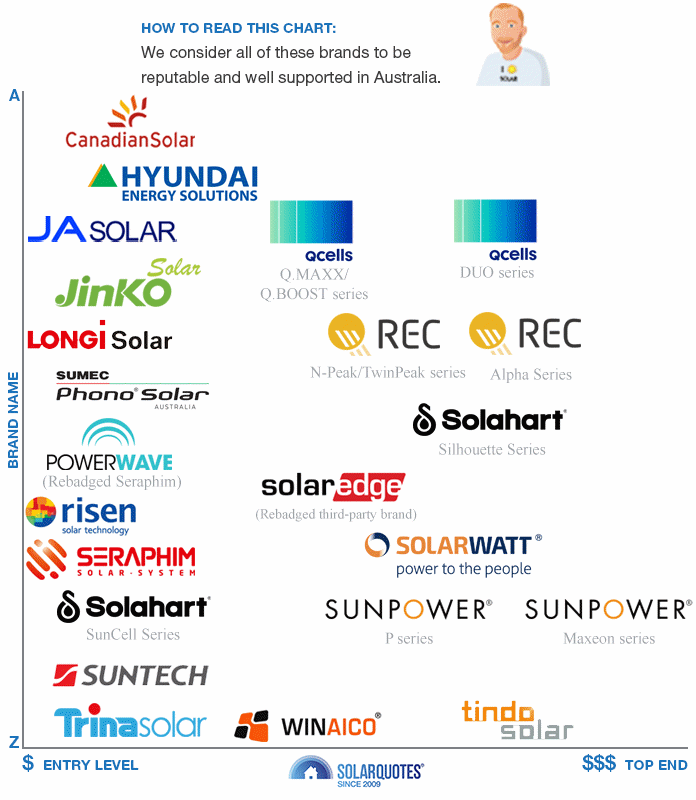

As cartoon Finn says at the top:
“We consider all these brands to be reputable and well supported in Australia.”
Panels don’t become reputable unless they’re reliable. We expect all panels above to last decades on a roof without problem. If we learn a company has let their standards fall, either in panel quality or customer support, we will stop recommending them. If a panel isn’t on the chart above it doesn’t necessarily mean it’s bad. We just may not have enough information on it. But there are no bad panels on the graphic, so if you want to be confident you’ve got a good solar panel, get one we recommend.
If you want details on these panels, you can check them out on our Solar Panel Comparison Table.
I’ve reviewed the warranties and installation manuals for all these panels to find which ones allow shading. There are only a few that do.
Canadian Solar
Because I’m using alphabetical order and because we don’t recommend Aardvark panels due to their tendency to intentionally attract ants, I’ll begin with Canadian Solar.
Their warranty makes it clear it doesn’t apply to panels where there is “constant shading”:


The same exception clause also says the warranty won’t apply if the solar panels aren’t installed according to “standard product documentation”. This would be the installation manual, which says…
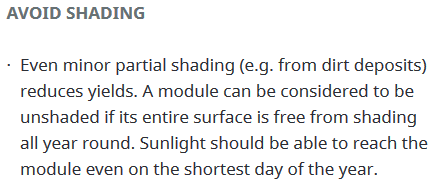

While the Canadian Solar documents don’t define “constant shading”, it does sound to me — a person who ain’t no lawyer — that an installation where shade falls on panels for even part of the year is prohibited by the warranty.
Hyundai
Just to be clear, Hyundai Energy Solutions is a legally separate entity from the Hyundai that makes cars, but it’s still a big $300 million company.
I’m not a big fan of their warranty, which says that if it applies comes down to “Hyundai’s solar and absolute judgment.” That’s quite an escape hatch they’ve written there and only makes it a warranty if Hyundai feels like it. Fortunately, we don’t have to put up with that kind of nonsense because Australian Consumer Guarantees protect us. But it still doesn’t give me a good impression of the company.
As with 100% of warranties I’ve seen, it says panels must be installed according to the installation manual for the warranty to be valid:


So I went to its installation manual and found the following:
![]()
![]()
This puts Hyundai solar panels’ warranty in the “no shade” category.
JA Solar
I found no mention of shade in the JA Solar warranty, but their installation manual gives this vital advice…
![]()
![]()
…which is a very relevant piece of information if you happen to be Elon Musk. Or potentially Mr Squiggle.

Ever notice how you never see Mr Squiggle and Elon Musk together in the same room?
Below this, it says:


This makes JA’s warranty a “no shade” one.
Jinko Solar
Jinko’s warranty doesn’t mention shade, but looking in the installation manual, I found the following passage:


While this seems more like a recommendation than a requirement, it does say to avoid anything that could cast shadows on JinkoSolar panels, so this wording makes me file them under “no shade”.
LONGi Solar
The Longi installation manual has a long list of requirements for the installation of panels, and the first one is…
![]()
![]()
![]()
![]()
Oh come on! Is this really a problem? Who is it that’s not just launching panels into space, but launching them into space and then making warranty claims? What’s more, why are they doing it so much that two major panel companies so far feel the need to specifically exclude it? Why isn’t the prohibition against installation on moving vehicles enough? Does this mean someone owns a secret moon base?
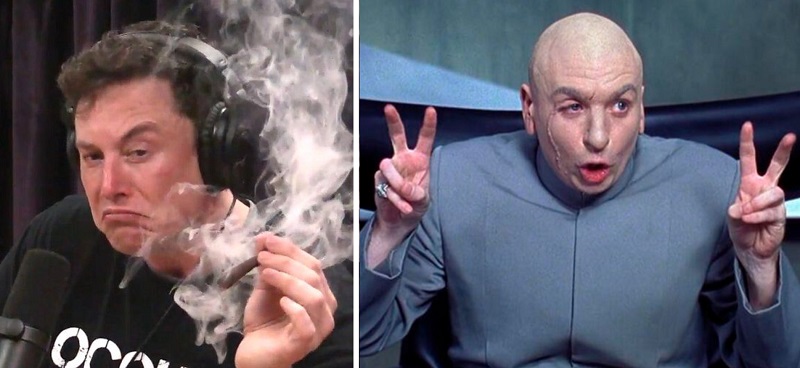

Ever notice how you never see Elon Musk and Dr Evil together in the same room?
Much lower down on the list of requirements is:




So Longi does not allow their solar panels to be shaded.
Phono Solar
Phono Solar is part of the giant, $1.7 billion Chinese SUMEC corporation that has fingers in so many pies it asked its former affiliate expose it to nuclear radiation so it could grow an extra hand. While it’s impossible to know what the future may bring, its large size and diversity means it may be around to honour warranty claims after decades have passed. The Phono warranty document says…
![]()
![]()
![]()
![]()
So Phono are definitely no shade solar panels.
Powerwave
As far as I am aware, Powerwave solar panels are Seraphim panels that have been rebadged, which is jargon for “rebranded”. This means Seraphim makes them, and Powerwave puts their brand on them and becomes responsible for their warranties. Like Seraphim panels, they can’t be installed in shade.
Qcells
The Australian Qcells site has been improved since the last time I checked it out, and I had no problem finding the warranty and installation documents. The installation manual says:
![]()
![]()
![]()
![]()
On shading, the manual says:

So Qcells solar panels are another no shader.
REC Solar
I have some good news concerning REC solar panels. While their installation manuals really dislike shade…




…there’s not a blanket ban against it provided it’s kept to “an absolute minimum”. While not much, it’s better than nothing. This makes them the first panel warranty to not rule out shade.
Risen
I used to consider the Risen Solar site a strong contender for the most hilarious misuse of English award, but now they have a dedicated Australian site and it makes much more sense. Despite this, their installation manuals could still use a little polishing…




…but not having perfect English is no risen to make fun of them.
When it says “even the partially shading” should be avoided, whether or not that’s a ban on shade depends on how you interpret the word “should”. As I mentioned, here it’s often a recommendation rather than a requirement. Because I’m not a lawyer so I can’t really say what it means in this circumstance. Even if I did ask a lawyer, the reply might be, “How much is it worth to you?” Until Risen clarifies this, I’m going to assume their solar panels can’t be installed in shade.
Seraphim
The Seraphim installation module cautions against shading not once, but twice:




So yet another solar panel warranty that does not allow shading.
Solahart
Solahart doesn’t make solar panels. Instead, they sell rebranded panels produced by others. Solarhart is responsible for the manufacturer’s warranty for panels with their name on them. Their Silhouette panels are Qcells panels and, as described above, their warranty doesn’t allow shade. Astronergy produces their SunCell panels and the good news here is they do not forbid shading, they just say not to shade them for a long time:




So Astronergy solar panels, sold as Solarhart Suncells, can withstand some partial shading without voiding their warranties. No definition is given of what a “long time” is, but it’s always best to keep the time a panel is partially shaded as short as possible.
SolarEdge
Like Solahart, SolarEdge is not a panel manufacturer but has panels made for them, puts their name on them, and becomes responsible for their manufacturers’ warranty. The installation manuals for SolarEdge solar panels give a warning about long periods of shading…




…but don’t say shading must be avoided. This makes them one of the limited number of panels to not have a ban on shading.
Solarwatt
The Solarwatt warranty and installation manuals mention shading in reference to installation only in the following way:




But that’s all they say. While it still makes sense to avoid shading as much as possible, the Solarwatt warranty is one of the few that does not forbid solar panel shading.
SunPower
The installation manuals for SunPower Maxeon and Performance solar panels say permanent shading that remains on a panel through the day needs to be avoided but, while it should be minimized, some partial shading won’t wreck the warranty:
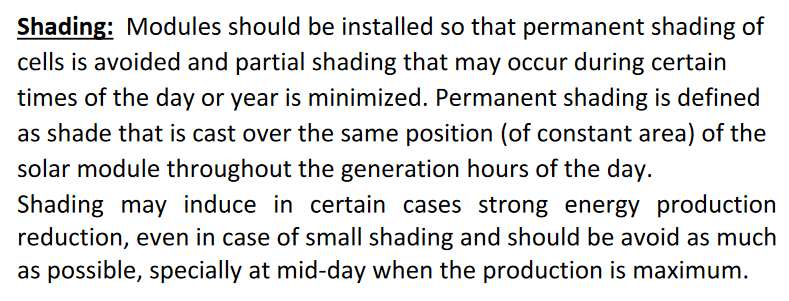



Of course, given how much SunPower has boasted about how well their Maxeon panels handle shade, I’d be pretty shocked if the warranty forbids partial shading.


Now I think about it, there is probably a very good reason why we never see young Elon Musk and Dr Bunsen Honeydew together in the same room.
Suntech
Suntech makes it clear no shade is permitted on their solar panels:
![]()
![]()
![]()
![]()
While not being able to expose panels to shade without voiding the warranty isn’t good, I appreciate that they’ve made it clear in their installation manual. Suntech is the only manufacturer I’ve seen that provides this simple courtesy.
Tindo Solar
The only solar panels made in Australia, or at least the only ones I can recommend, are produced by Tindo Solar. Unfortunately, their site doesn’t have clear links to their warranty or installation manual. I don’t know why it doesn’t, but maybe the fact water goes down the drain in the opposite direction here to the northern hemisphere interferes with web page design? Because you’re not likely to find it on their site at the moment, here’s a link to their 2021 warranty. Note that under the right circumstances, Tindo will provide a 25 year product warranty and not the 12 years in that document.
Here’s a link to their installation manual, which says…




So Tindo Solar is another manufacturer whose warranty requires their panels avoid shade.
Trina Solar
For their standard panels, Trina Solar’s installation manual says:
![]()
![]()
![]()
![]()
That is not a blanket ban on shading. While it needs to be minimized, it doesn’t say it’s not allowed, so it looks like — if you have some shading — your Trina warranty will be okay.
But the installation manual for Trina’s bifacial Duomax panels, which are glass on top and bottom, says:
![]()
![]()
![]()
![]()
Winaico
As there are very few panel warranties that allow shade, I was hoping Winaico would be okay with at least a little, but they turned out to be very strict. Here’s what the warranty says:
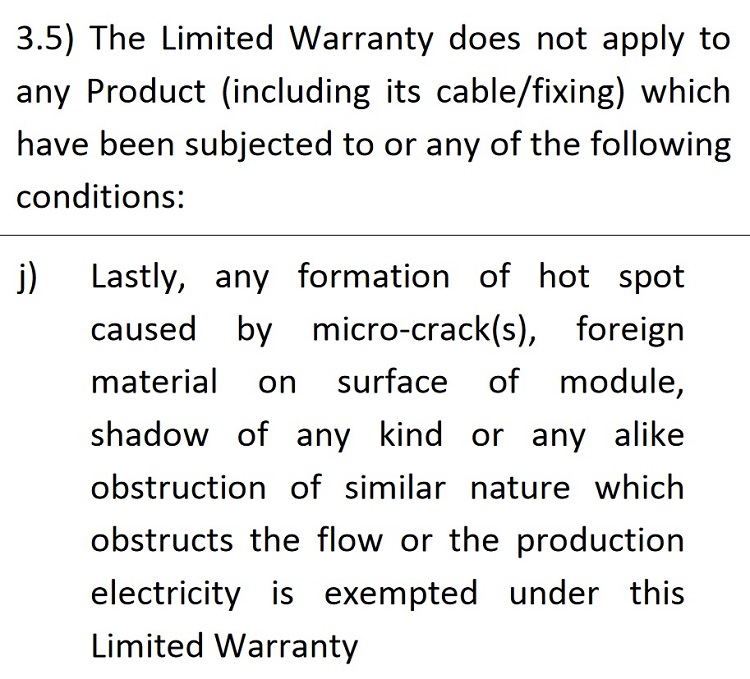

Note this excerpt skips conditions a) through i).
That “shadow of any kind” provision is really tough. If you want to be pedantic, a bird flying between the panels and the sun one time would void the warranty. Given that night is a kind of shadow, it could mean the warranty may not last 24 hours. But I’m certain that’s not what Winaico counts as shade. Their installation manual is far less strict and merely says an installation should be as free as possible from shade:




But while the installation manual takes a reasonable approach to shade, the warranty document does not, and that puts Winaico solar panels in the no shade category.
A Shady Summary
Of the 19 different solar panel brands I investigated, only six had panels with warranties that allowed them to be installed in shade. These were:
- REC
- Solahart — Suncell (Astronergy) panels only
- SolarEdge
- Solarwatt
- SunPower
- Trina — but not their bifacial Duomax panels
This is not a wide selection.
Manufacturers May Allow Some Shading
Solar panel warranties are strict on shade because manufacturers want to minimize how many panels they replace under warranty. If panels are never partially shaded it eliminates one potential cause of failure. Opposing this is the fact they don’t want to lose sales to rivals with warranties that are more flexible when it comes to shade.
For this reason, if you are planning to install a solar power system that will suffer a modest amount of shade but want to use a panel with a warranty that prohibits any, you can contact the manufacturer and see if they will allow what you have planned. Any well-made solar panel should be able to handle a modest amount of shading, especially if it only occurs early or late in the day.
In practice, it will normally be installers — not homeowners — who will contact manufacturers to see if they will sign off on installations with a modest amount of shading.
But it would be better if all manufacturers determined how much shading their solar panels could handle without a significant risk of developing a problem. Then we could have clear guidance in the installation manuals on how much shade the panels can handle while remaining in warranty. That will make life easier for installers and their customers and improve sales for manufacturers that allow some shading.
Of course, if it turns out a solar panel can’t tolerate any shading for the 25+ years of its performance warranty, they’re not going to a panel we can recommend.
Footnotes
- Also note, the solar company that takes your money is ultimately responsible for all warranties, so a panel manufacturer refusing a warranty claim does not necessarily mean that the solar company can refuse your warranty claim. ↩
Original Source: https://www.solarquotes.com.au/blog/solar-panel-warranties-shade/



